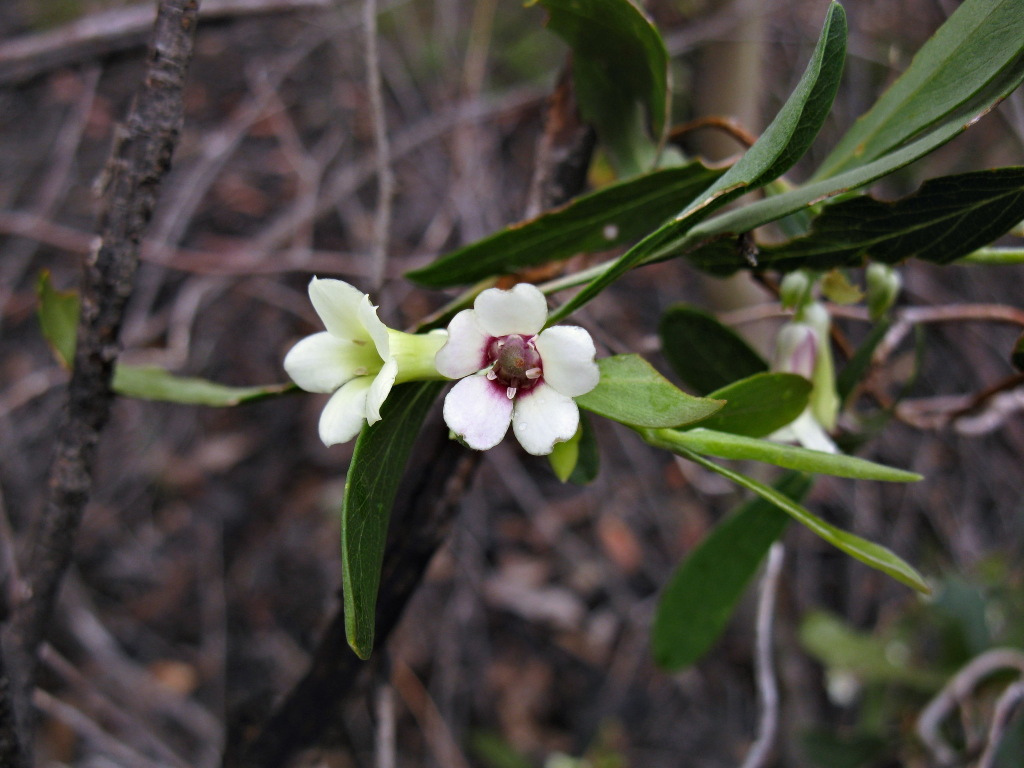Billardiera versicolor
F.Muell. ex KlattRobust twining shrub, stems glabrescent. Leaves sessile or subsessile, narrowly ovate to narrowly obovate, 2.5–6(–8) cm long, 4–15 mm wide, glabrous or with scattered hairs on margins. Flowers c. 5–12 in terminal, ± sessile cymes; sepals ovate to lanceolate, 3–6 mm long, glabrous to villous dorsally, glabrous on inner face; corolla narrowly campanulate, 11–15 mm long, lobes free, acute to acuminate, spreading to recurved near apex, cream, blotched red, darkening with age, minutely ciliate along margins; stamens c. half to two-thirds as long as corolla; ovary glabrous to silky-pubescent, style c. 0.5 mm long, exceeded by stamens. Capsule glabrous or pubescent, ovoid to cylindric, 8–15 mm long; seeds flattened-ellipsoid, c. 2 mm long. Flowers Sep.–Dec.
LoM, MuM, Wim, GleP, OtP, Gold, CVU, GGr, DunT. Locally common in the western half of the State, occurring on deep sands, sandy loams and shallow or stony soils, chiefly in mallee areas, but occasional in drier woodland and scrub, extending towards Melbourne in the Bacchus Marsh-Little River area, and into south-western Victoria.
This species is very similar to Billardiera cymosa, but may be distinguished by some very subtle differences in floral arrangement and petal colour. Billardiera versicolor is distinguished by the inflorescences being more or less sessile in leaf axils, and white flowers with a darker throat that turn overall reddish with age. Whereas B. cymosa has shortly pedunculate inflorescences and blue or red (rarely white) flowers that do not become darker with age. Vegetatively plants are very similar, although B. versicolor is often a more robust shrub, sometimes with wider leaves. However, these vegetative characters alone are not reliable for distinction of species. This is problematic where the two species co-occur, as sterile plants are commonly encountered in semi-arid environments (especially in dry years). Furthermore, upper leaves are often deciduous in fruit, making infructescences sometimes appear pedunculate rather than sessile.
 Spinning
SpinningCayzer, L.W.; Crisp, M.D.; Telford, I.R.H. (2004). Cladistic analysis and revision of Billardiera (Pittosporaceae). Australian Systematic Botany 17(1): 83–125.



